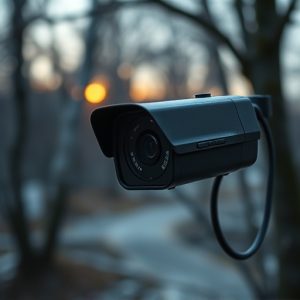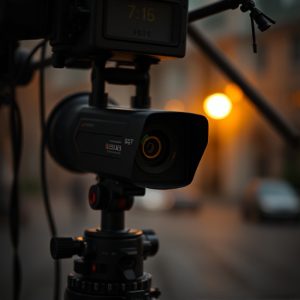Micro Cameras for Child Protection: A Comprehensive Guide to App Usage and Ethical Considerations
Micro cameras for child protection leverage infrared technology and heat signature detection to disc…….
Micro cameras for child protection leverage infrared technology and heat signature detection to discreetly monitor young ones, offering parents peace of mind day or night. Setup involves downloading a reputable app, granting permissions, calibrating sensors, and adjusting settings. Apps display infrared images, allowing inspection and recording of unusual activities while respecting privacy. Responsible use requires ethical guidelines, clear boundaries, open communication with children, secure data storage, regular privacy reviews, and adherence to local laws.
Infrared camera detector apps have emerged as powerful tools for Micro Cameras for Child Protection, offering parents and caregivers enhanced surveillance capabilities. This guide delves into the technology behind these tiny yet advanced cameras, providing a step-by-step breakdown of setting up and utilizing an infrared camera detector app effectively. Additionally, it explores crucial ethical considerations and best practices to ensure responsible use when monitoring children’s activities.
- Understanding Micro Cameras: Unveiling the Technology for Child Protection
- Setting Up and Using the Infrared Camera Detector App: A Step-by-Step Guide
- Ethical Considerations and Best Practices for Using Infrared Cameras on Children
Understanding Micro Cameras: Unveiling the Technology for Child Protection
In today’s digital era, technology plays a crucial role in safeguarding our loved ones, especially children. One innovative tool that has emerged is the micro camera detector app, designed to enhance child protection measures. These miniature cameras, often incorporated into everyday devices or wearables, offer a discreet yet powerful means of monitoring and ensuring child safety.
Micro cameras for child protection harness infrared technology, allowing them to capture high-resolution images and videos in low-light conditions. This is particularly beneficial during nighttime surveillance or in environments with limited natural light. By utilizing advanced sensors and image processing algorithms, these micro cameras detect heat signatures, enabling them to record activities even when visual clarity is obscured. This unique capability ensures that parents, caregivers, or authorities can remotely monitor children’s safety without causing any disruption to their daily routines.
Setting Up and Using the Infrared Camera Detector App: A Step-by-Step Guide
Setting up and using an Infrared Camera Detector App is a straightforward process designed to empower parents with a powerful tool for child protection. Begin by downloading a reputable app known for its accuracy and ease of use, often featuring micro cameras optimized for night vision and heat detection. Once installed, allow necessary permissions for access to your device’s camera and location services. The app will then guide you through a simple setup process, which may include calibrating the camera and adjusting sensitivity settings tailored to your specific environment.
Post-setup, utilizing the app is intuitive. Simply point your device’s camera towards the area you wish to monitor, whether it’s a nursery or a common family space. The app will display an infrared image on your screen, highlighting bodily heat signatures within its field of view. You can zoom in for closer inspection and use the app’s recording feature to document any unusual activity or potential safety concerns. Remember, these apps are valuable tools when used responsibly and ethically for child protection, enhancing peace of mind for parents while ensuring privacy for all family members.
Ethical Considerations and Best Practices for Using Infrared Cameras on Children
When utilizing infrared camera detector apps and micro cameras for child protection, it’s paramount to approach the technology with a strong ethical framework. Parents and caregivers must ensure that any surveillance is done responsibly, respecting the privacy of children while fostering their safety. It’s crucial to establish clear boundaries and communicate openly with the child about the use of these devices, promoting trust and understanding.
Best practices involve using the cameras for specific, identified purposes related to a child’s well-being, such as monitoring sensitive environments or tracking known risks. Data collected should be securely stored and accessed only by authorized individuals. Regularly reviewing and updating privacy settings is essential to maintain control over who can view the footage. Additionally, staying informed about local laws regarding surveillance technology helps ensure compliance and ethical deployment of micro cameras for child protection.
Micro cameras, particularly when paired with dedicated apps like infrared camera detectors, offer a powerful tool for enhancing child protection. By understanding the technology, following straightforward setup instructions, and adhering to ethical guidelines, parents and caregivers can leverage these devices to ensure children’s safety without compromising their privacy or well-being. This guide has provided the necessary framework for responsible implementation, highlighting the importance of balancing technological advancements with safeguarding our young ones.


